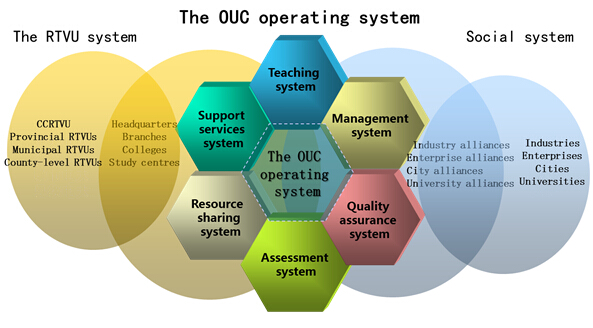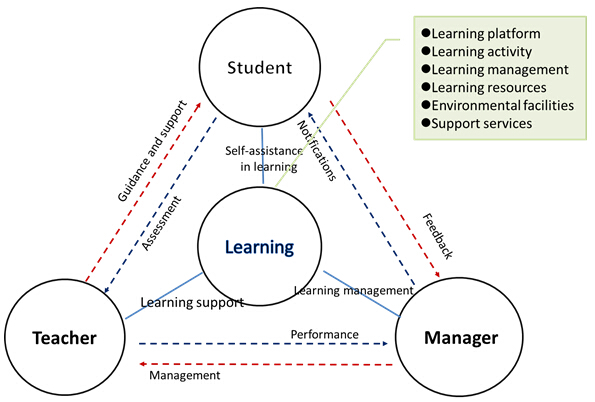Page 3 of 6
2. Why does the OUC operating system need to construct a self-organization system?
Supported by information technology, the OUC is a new type of institution of higher education committed to open and distance education for adults. The OUC operating system not only supports an external organization structure consisting of the OUC headquarters, branches, local colleges, learning centers, numerous support alliances, and industry colleges and enterprise colleges covering the majority of urban and rural areas,it also supports an internal organization system engaged in internal teaching, management, quality, assessment, resource sharing and support services(see Figure 2)[6]. The OUC is not only a complex educational organization, it is also a social organization that takes the initiative to develop itself and adapt dynamically to environmental changes. Therefore, the study of the complex behavior of distance education from the perspective of self-organization will paint a clearer picture of the construction of the OUC operating system. The construction of the operating system is seen as a complex process of self-organization with its own development path; managers must take appropriate action during the construction of the operating system in line with the “veining” of the system’s development, and set order parameters accordingly. Only in this way can the system create the basic conditions of openness, imbalance, nonlinear interaction and fluctuation, as well as the capacity to maintain and generate new functions accordingly.

Figure 2 The Composition of the OUC operating system
Teaching design forms the core of teaching activities within the OUC operating system, with its fundamental methodology based on the theories and concepts of system science. The introduction of self-organization theory to the study of instructional design may encourage a fresh perspective. Self-organization theory is conducive to understanding and analyzing a student’s internal learning mechanism. As a result, discussions can be held on instructional designs that encourage a student to think at a higher level, in order to improve the quality and targeted nature of instructional design. Self-organization shapes a comprehensive knowledge structure, a flexible capability structure and a sound quality structure (see Figure 3).

Figure 3 The Internal Self-Organization Model of a Learning System